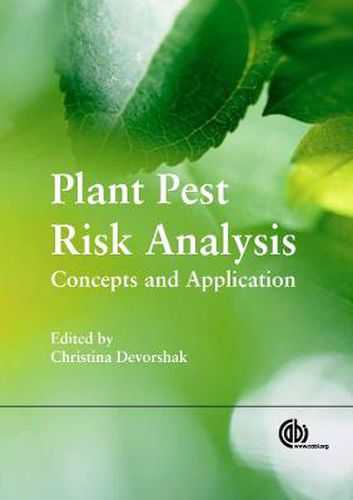Readings Newsletter
Become a Readings Member to make your shopping experience even easier.
Sign in or sign up for free!
You’re not far away from qualifying for FREE standard shipping within Australia
You’ve qualified for FREE standard shipping within Australia
The cart is loading…






Pest risk analysis is an evolving and dynamic field. It informs decisions for regulatory plant protection, from domestic activities such as prioritizing pests for surveillance to making quarantine decisions regarding the importation of products. This text provides a solid foundation in pest risk analysis and its application to regulatory plant protection. Basic methods for pest risk analysis are addressed, including how they can be used to solve real life problems in the context of national and international rules, regulations, requirements, laws and agreements. Written by practicing risk analysts, the text is enhanced with examples of methods and applications, many of which are based on real analyses performed by plant protection organizations. Understanding of basic tools and methods is encouraged to enable the reader to prepare, review and develop scientifically sound and technically defensible pest risk analyses. This is an essential resource for students in agricultural sciences, and regulatory plant protection professionals wishing to learn about pest risk analysis: why we do it, how it’s done, and what it requires.
$9.00 standard shipping within Australia
FREE standard shipping within Australia for orders over $100.00
Express & International shipping calculated at checkout
Pest risk analysis is an evolving and dynamic field. It informs decisions for regulatory plant protection, from domestic activities such as prioritizing pests for surveillance to making quarantine decisions regarding the importation of products. This text provides a solid foundation in pest risk analysis and its application to regulatory plant protection. Basic methods for pest risk analysis are addressed, including how they can be used to solve real life problems in the context of national and international rules, regulations, requirements, laws and agreements. Written by practicing risk analysts, the text is enhanced with examples of methods and applications, many of which are based on real analyses performed by plant protection organizations. Understanding of basic tools and methods is encouraged to enable the reader to prepare, review and develop scientifically sound and technically defensible pest risk analyses. This is an essential resource for students in agricultural sciences, and regulatory plant protection professionals wishing to learn about pest risk analysis: why we do it, how it’s done, and what it requires.